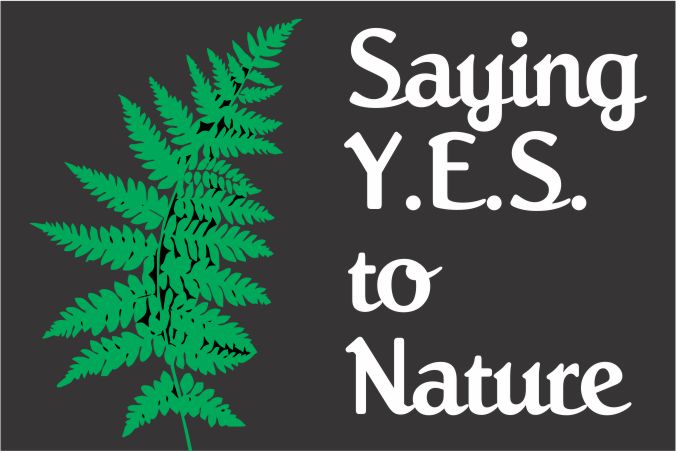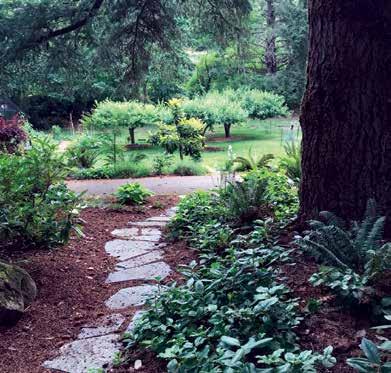
4 minute read
Naturally Grown Garden
BY PAMELA WALKER
My garden was one of eight chosen to be on this year’s Ladysmith Rotary Garden Tour. I wanted to be in the tour, not because my garden is particularly manicured or weed-free, but because it has a lot of plants that grow here naturally. Yes, I have some hydrangeas and hostas, some rhodos and ranunculus, but I also have sword ferns and kinnikinnic and Oregon grape, huckleberry and salmonberry, and quite a lot of salal.
When we bought this place almost 14 years ago, the landscape was suffering not from neglect but from downright abuse. There were hidden rugs and ropes, plastic bags and old roofing shingles buried everywhere. There were spikes and nails in almost every tree. One Douglas-fir had grown around a blue tarp that had been carelessly tossed into a fork in its trunk decades earlier.
Hiring a permaculturalist – a specialized landscaper who understands how to mimic natural ecosystems in order to create sustainable and self-sufficient systems, and who also knows about indigenous plants – was the best thing I ever did. Yes, it was expensive, but I could never have imagined the transformative change that Priscilla Brewer of Envy Landscaping would make to my outside space. She fashioned gardens under trees that appreciate the cooler temperatures and the shade. She crafted a dry riverbed that collects runoff in the winter and allows it to trickle slowly into a year-round pond. She formed an herb garden that is easily accessible to my kitchen, making meals tastier and more nutritious. Truly, she created a national park just for me.
Then I hired David Pink of Warmland Irrigation to put in a micro-irrigation system. A timer now controls the release of tiny amounts of water directly at the plants, at night, when evaporation is at its lowest. Even though native plants require much less water than non-native plants, our deep well goes dry every year, so getting every drop where it needs to go is important.
Around 175 people came to my garden the day of the tour, and all said the same thing: it is a “peaceful space.” It’s not a riot of colour, as most native plants are not particularly showy, but people thought it was “pleasing spot” of sea, olive and khaki green. One woman even came back with a thank-you card for me. It reads, “You are a wonderful example of how to love the earth.” She never saw the before pictures! But I am glad my work has paid off – less to create a showpiece than to restore it close to what it was before it became a homestead. Since adding the pond and a greenhouse, my husband and I have flourished. So has the wildlife. We grow lots of food for ourselves and for the pollinators, butterflies and native species who have returned to dine on what nature intended for them – not on “forever chemicals.”

My work is not finished yet. There’s a sunny spot where nothing much grows but rocks. We pushed down our hügelkultur (a mound of sticks and weeds that has rotted for the last 10 years and now is close to being soil) and added grass clippings from a neighbour and manure from a local horse owner. We think the spot is ready to receive some Garry oak saplings and camas bulbs this fall. Wouldn’t it be marvelous if we could make our own Garry oak meadow! Tips on how to do it are coming in from books and online lectures, as well as know-how from local master gardeners.
Being part of the Yellow Point Ecological Society has taught me so much. I now know to keep the Scotch broom and Daphne (spurge-laurel) out of my yard and to encourage the vanilla leaf, false Solomon’s-seal and yerba buena – all natives that have appeared here by themselves. Somehow they must know what those on the tour have learned: this is a peaceful place, and they are welcome to stay.




